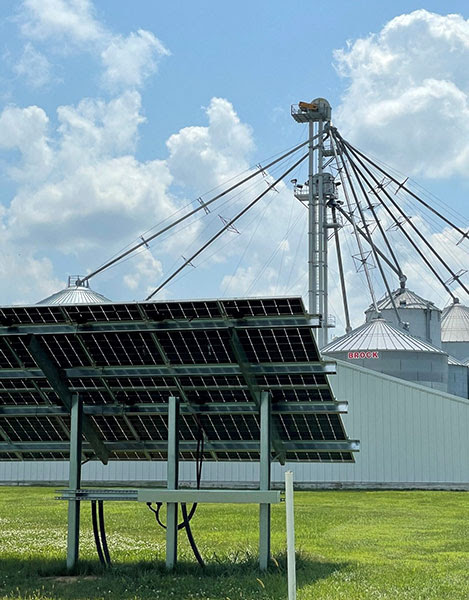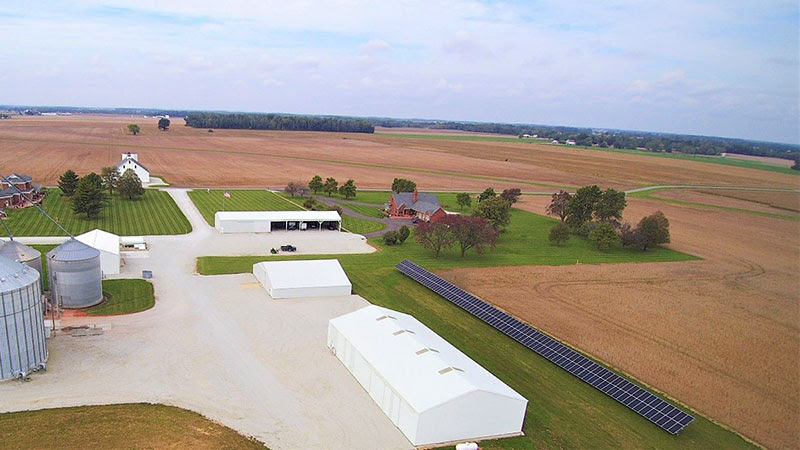Emergent Solar Energy recently completed a solar microgrid system near Greensburg, Indiana, which is expected to generate enough emissions-free clean energy to offset nearly 4,000 tons of carbon dioxide over its lifetime, the same amount produced from driving 5 million miles.
The system consists of a 65-kilowatt, bifacial ground-mount solar array plus 30 kilowatts of energy storage with a natural gas and propane backup generator. It also includes charging stations for electric vehicles that will replace the farm’s gas-powered vehicles over time and further use clean energy production for their operation.
Headquartered at Purdue Research Park in West Lafayette, Indiana, Emergent Solar Energy provides solar solutions to the commercial, industrial, municipal and agricultural sectors across the state of Indiana
Jeremy Lipinski, managing partner at Emergent Solar Energy, said it is the company’s first design with multiple sources of power generation and energy storage.
“This microgrid solution uses solar energy plus energy storage along with being connected to the REMC, or Rural Electric Membership Corp., utility grid,” Lipinski said. “It optimizes the farm’s energy use of the lowest-cost source of energy at any moment, thereby reducing the energy costs and fixing an increasing input.”

Emergent Solar Energy
The Corya System is a group of integrated agribusiness investment and operating companies that own, develop and lease farmland and specialized agricultural infrastructure including crop production, grain storage and livestock production facilities. This is the first addition of PV to Corya System’s portfolio. P. David Corya, general manager of the Corya System, decided to implement solar energy options for several economic and sustainability reasons.
“From an economic perspective, the project offsets traditional grid usage and insulates our operation from rising energy prices, creating a significant and growing cost of production advantage, while enabling additional future cost savings from electric vehicle fleet conversion,” Corya said.
“From a sustainability perspective, we are committed to stewardship practices that protect air, soil, water and wildlife.”
Lipinski said the application of on-farm solar plus energy storage makes sense when renewable energy can be dispatched to offset the highest-cost demand and charge the battery bank at the lowest cost.
Total solar investment in Indiana is approximately $1.5 billion. Growth projection is 5,971 MW over the next five years and the State is ranked 18th (up from 32nd in 2020), according to SEIA.
This content is protected by copyright and may not be reused. If you want to cooperate with us and would like to reuse some of our content, please contact: editors@pv-magazine.com.









By submitting this form you agree to pv magazine using your data for the purposes of publishing your comment.
Your personal data will only be disclosed or otherwise transmitted to third parties for the purposes of spam filtering or if this is necessary for technical maintenance of the website. Any other transfer to third parties will not take place unless this is justified on the basis of applicable data protection regulations or if pv magazine is legally obliged to do so.
You may revoke this consent at any time with effect for the future, in which case your personal data will be deleted immediately. Otherwise, your data will be deleted if pv magazine has processed your request or the purpose of data storage is fulfilled.
Further information on data privacy can be found in our Data Protection Policy.